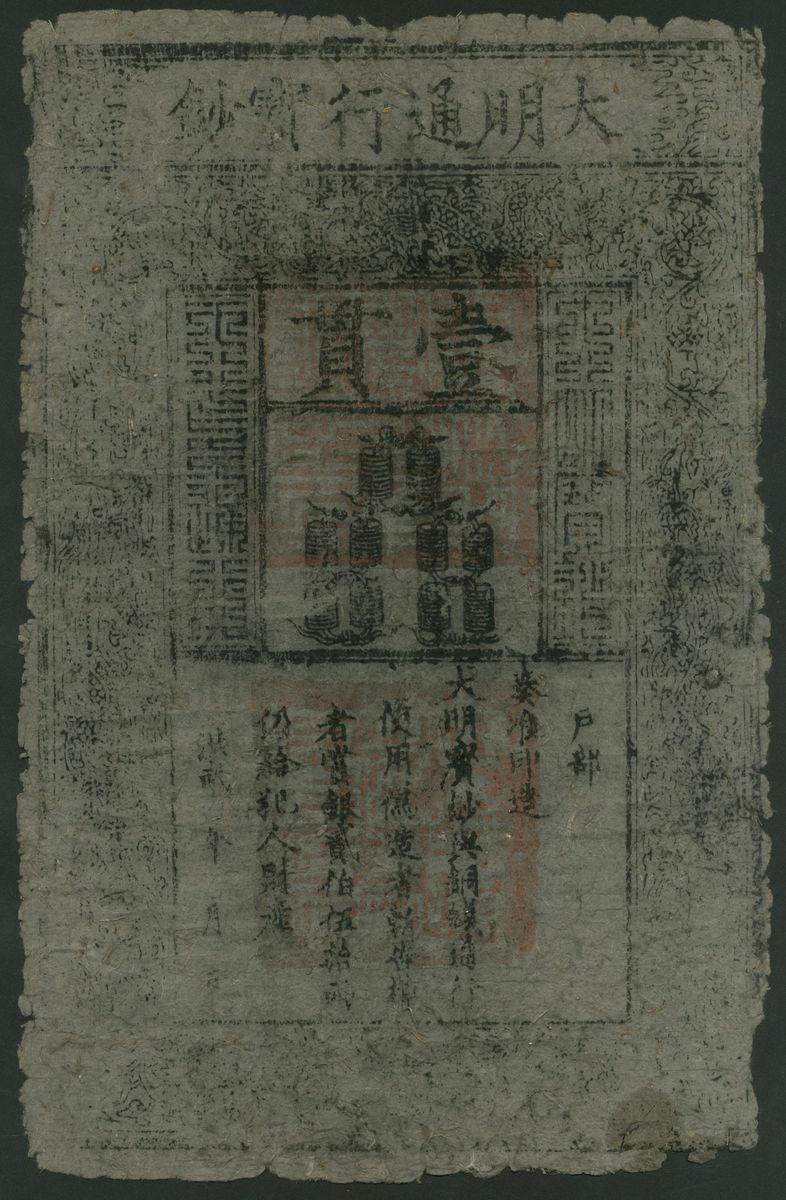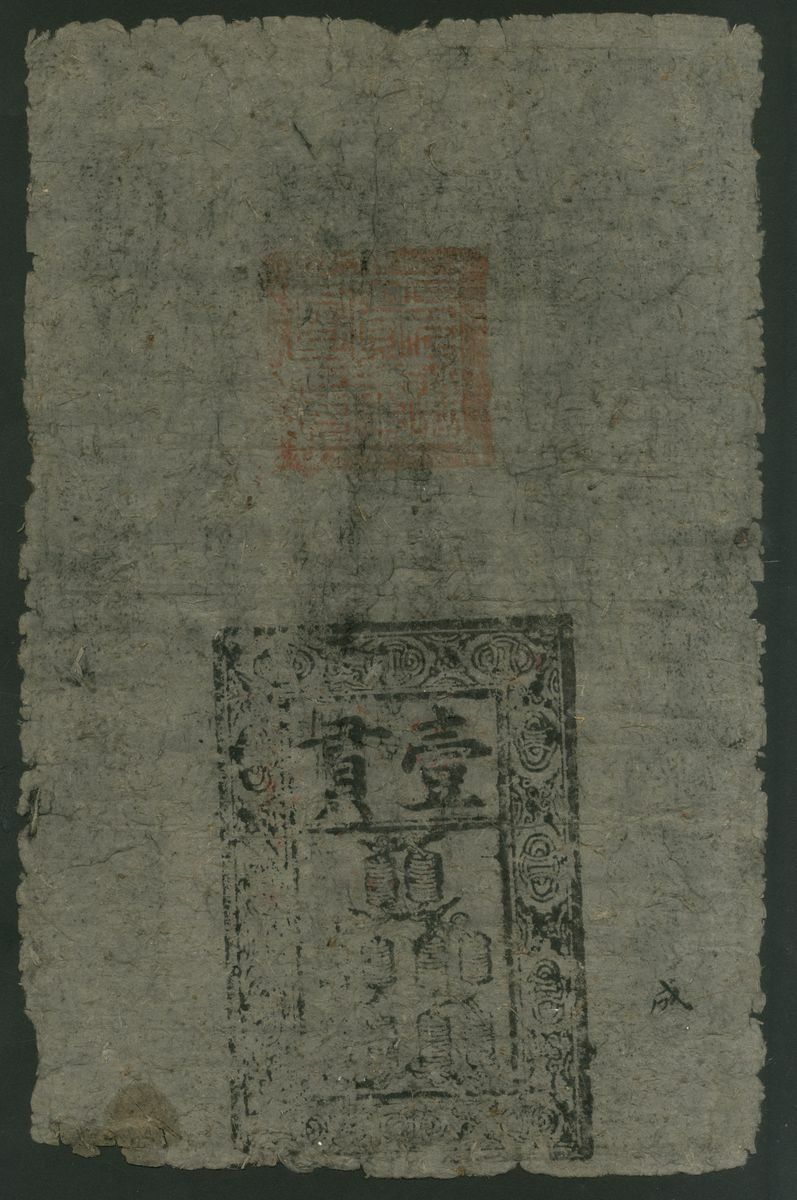Auction: 24009 - World Banknotes
Lot: 57
Ming Dynasty China, Da Ming Baochao, 1 Kuan, 1368-99,
this remarkable 1 Kuan banknote dates back to the Ming dynasty and was commissioned over 600 years ago during the rule of Zhu Yuanzhang, the first Ming emperor. More specifically, this banknote was introduced between 1368 to 1399 and was part of an attempt by the Ming government to entirely replace the monetary exchange of silver and gold coins with paper currency. The Ming dynasty itself can often be defined as a prosperous financial era in China as a result of international trading and population growth.
Across the top of this banknote reads 'Da Ming tongxing baochao' which translates as 'Great Ming Circulating Treasure Certificate'. The note also denotes that any counterfeiting will result in execution, clearly establishing the seriousness of this offence. The intricate craftsmanship lends further insight into the historical significance of this exceptional 1 Kuan. With the use of paper currency beginning in 7th Century China, linen, hemp, bamboo and the bark of a mulberry tree were all sourced to create paper for banknotes. This note presents us with the use of grey mulberry bark with black text. In order to create consistent text on each banknote, the chosen text was carved onto a woodblock, and then imprinted onto the mulberry tree bark. Red rectangular seals also appear on the face, as well as the image 10 strings of cash coins at the centre, indicating the banknotes value as the highest available denomination at the time. This banknote is a remarkable piece, standing as a historical emblem of the Great Ming era,
(Pick AA10, S/M T36-20), about good
Subject to 20% VAT on Buyer’s Premium. For more information please view Terms and Conditions for Buyers.
Sold for
£1,800







